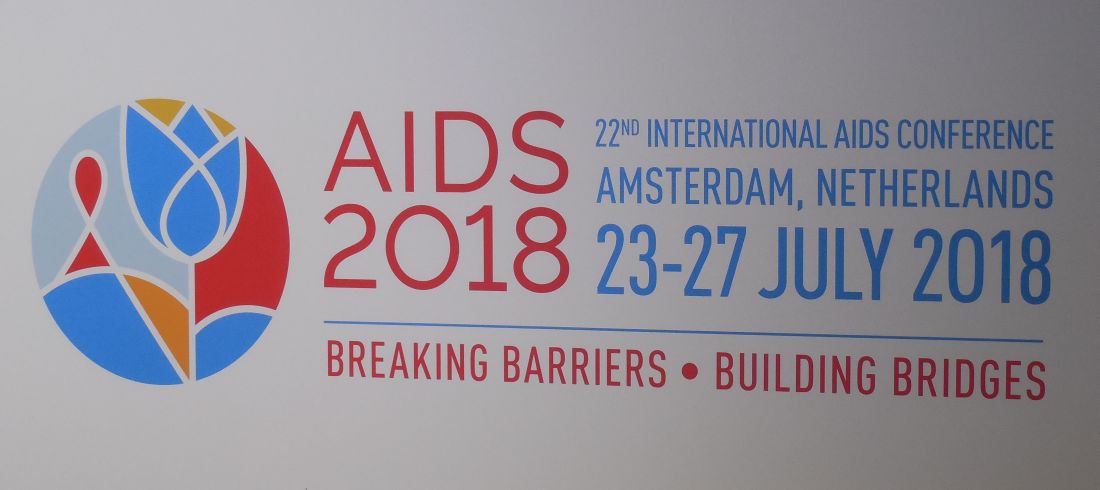AMSTERDAM – Patients infected with HIV had a roughly doubled rate of stroke compared with the general population, based on analysis of data collected from about 23 million people in Taiwan – including nearly 6,000 with HIV infection.
The combined rate of both ischemic and hemorrhagic stroke was especially elevated during the first 7 years after a diagnosis of HIV positivity, with a nearly 47-fold increased incidence rate during the first year following HIV diagnosis compared with the general age- and sex-adjusted general population, and a nearly fourfold increased rate during years 1-7, both statistically significant differences, Hui-Lin Lin, MD, reported in a poster at the 22nd International AIDS Conference.
Once the period studied reached 8 or more years out from the time of HIV diagnosis, infected patients showed no statistically significant difference in their stroke rate compared with the general population. For the entire follow-up, the stroke rate was 94% higher among HIV-infected patients compared with the general population, a statistically significant difference.
HIV-infected patients who had a stroke also developed it at a much younger age than did the general population. The median age of the infected patients with a stroke was 49 years, compared with a median age of 70 years in the general population.
These findings “highlight the importance” of both screening for stroke risk factors and then starting management steps to minimize these risk factors “immediately and aggressively” after HIV infection is first identified, said Dr. Lin, a researcher at Lin Shin Hospital in Taichung, Taiwan.
Dr. Lin and an associate used data collected by the national health system of Taiwan for about 23 million residents who received care during 1998-2005. They identified 5,961 patients first diagnosed with an HIV infection during this period who had no history of stroke, and 22,307,214 people managed in the health system during the same time with no diagnosed HIV infection and no stroke history. The researchers then followed the stroke incidence among these people through 2011.
Following their HIV diagnosis, those with an infection had 59 ischemic strokes, 29 hemorrhagic strokes, and 15 strokes of undetermined type during an average follow-up of about 8 years. The researchers compared these incidence rates with the general population using standardized incidence ratios (SIR) that adjusted for age, sex, and duration of follow-up. The median age of those diagnosed with an HIV infection was 32 years, while the median age of the 22 million uninfected residents was 34 years.
The SIR analysis showed the excess rate of strokes was particularly significant among HIV-infected patients aged 65 or younger at the time of their infection diagnosis, and was more elevated in women than in men. Among infected men aged younger than 45 years, the SIR for any stroke was more than twice as high as in similarly aged men in the general population, and more than five times as high among infected women compared with similarly aged women in the general population. Among people infected with HIV when they were aged 45-65 years, the SIR for any stroke was 59% higher among men and three times as high among women. Both men and women who were first diagnosed with an HIV infection when they were aged older than 65 years did not have a significantly different SIR for stroke than the general population.
The researchers did not report information on which antiretroviral therapy the HIV-infected patients received or their immune status and how the level of infection control in infected patients related to their stroke rate.
SOURCE: Lin H-L et al. AIDS 2018, Abstract TUPDB0105.


